Científicos de la Universidad de Pittsburgh (Estados Unidos) han descubierto una población única de células madre adultas, derivada de músculo humano, que podría ser útil para tratar lesiones musculares y enfermedades como el infarto de miocardio y la distrofia muscular.
Los autores aislaron y caracterizaron células madre tomadas de los vasos sanguíneos (células mioendoteliales), las cuales proliferaron rápidamente en el laboratorio y se diferenciaron como células musculares, óseas y del cartílago.
En opinión de los investigadores, sus características las hacen ideales como terapia potencial de lesiones musculares y otras enfermedades como las citadas, según escriben en "Nature Biotechnology", pues estas células mioendoteliales se muestran mucho más eficientes para formar músculo que otras fuentes de células madre como son las células satélites y las endoteliales.
Jano Online 5/09/2007
Letter abstract
Nature Biotechnology
Published online: 2 September 2007 | doi:10.1038/nbt1334
Prospective identification of myogenic endothelial cells in human skeletal muscle
Bo Zheng1, Baohong Cao1, Mihaela Crisan1, Bin Sun1, Guangheng Li1, Alison Logar2, Solomon Yap1, Jonathan B Pollett1,3, Lauren Drowley1, Theresa Cassino1, Burhan Gharaibeh1, Bridget M Deasy1, Johnny Huard1,4,5 & Bruno Péault1,2,5
Abstract
We document anatomic, molecular and developmental relationships between endothelial and myogenic cells within human skeletal muscle. Cells coexpressing myogenic and endothelial cell markers (CD56, CD34, CD144) were identified by immunohistochemistry and flow cytometry. These myoendothelial cells regenerate myofibers in the injured skeletal muscle of severe combined immunodeficiency mice more effectively than CD56+ myogenic progenitors. They proliferate long term, retain a normal karyotype, are not tumorigenic and survive better under oxidative stress than CD56+ myogenic cells. Clonally derived myoendothelial cells differentiate into myogenic, osteogenic and chondrogenic cells in culture. Myoendothelial cells are amenable to biotechnological handling, including purification by flow cytometry and long-term expansion in vitro, and may have potential for the treatment of human muscle disease.
Top of page
1. Stem Cell Research Center, Children's Hospital of Pittsburgh; Department of Orthopaedic Surgery, University of Pittsburgh Children's Hospital and School of Medicine, 4100 Rangos Research Center, 3460 Fifth Avenue, Pittsburgh, Pennsylvania 15213-2583, USA.
2. Department of Pediatrics, University of Pittsburgh Children's Hospital and School of Medicine, 4100 Rangos Research Center, 3460 Fifth Avenue, Pittsburgh, Pennsylvania 15213-2583, USA.
3. University of Pittsburgh Cancer Institute, University of Pittsburgh Children's Hospital and School of Medicine, 4100 Rangos Research Center, 3460 Fifth Avenue, Pittsburgh, Pennsylvania 15213-2583, USA.
4. Departments of Molecular Genetics & Biochemistry and of Bioengineering, University of Pittsburgh Children's Hospital and School of Medicine, 4100 Rangos Research Center, 3460 Fifth Avenue, Pittsburgh, Pennsylvania 15213-2583, USA.
5. McGowan Institute for Regenerative Medicine, University of Pittsburgh Children's Hospital and School of Medicine, 4100 Rangos Research Center, 3460 Fifth Avenue, Pittsburgh, Pennsylvania 15213-2583, USA.
Correspondence to: Johnny Huard1,4,5 e-mail: jhuard@pitt.edu











